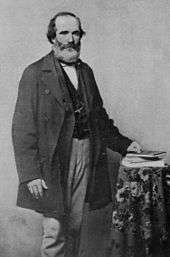John Cassin

John Cassin (September 6, 1813 – January 10, 1869) was an American ornithologist. A Pennsylvania Quaker and businessman, he took up an unpaid position as curator of the Philadelphia Academy of Natural Sciences and published several books, and described numerous species of bird.
Cassin was born in Upper Providence Township, Delaware County, Pennsylvania near Philadelphia on September 6, 1813.[1] Though his ancestors were Quakers, several had distinguished themselves in military and naval service.

A careful and talented taxonomist, Cassin named 198 birds not described in the works of his predecessors Alexander Wilson and John James Audubon. He is commemorated himself in the names of a number of birds from western North America, including the Cassin's auklet, Cassin's kingbird, Cassin's vireo, Cassin's sparrow, and Cassin's finch. The periodic cicada Magicicada cassini is also named for him.
Cassin drew, engraved, and colored many of the illustrations published in the Pacific Railroad Surveys.
Named curator of the Philadelphia Academy of Natural Sciences in 1842, Cassin described many new bird species and revised a number of families in the Academy's publications. His more extensive publications include Birds of California, with descriptions and colored engravings of fifty species not given by Audubon; Synopsis of the Birds of North America; Ornithology of the United States Exploring Expedition; Ornithology of the Japan Expedition; Ornithology of Gillis's Astronomical Expedition to Chile; and chapters on raptorial birds and waders in Ornithology of the Pacific Railroad Explorations and Surveys.
Only one volume appeared of the most ambitious of Cassin's works, the Illustrations of the Birds of California, Texas, Oregon, British and Russian America (1853–56). He also served as co-author, with Spencer Fullerton Baird and George Newbold Lawrence, of Birds of North America (1860).
He died in 1869 of arsenic poisoning caused by his handling of bird skins preserved with arsenic.[1][2] His collection, some 4300 birds, was purchased for $500 by John Whipple Potter Jenks for Brown University's new museum of natural history.[3]
References
- 1 2 "Minerals". Delaware County Institute of Science. Retrieved February 10, 2014.
- ↑ Cassin of Philadelphia
- ↑ Annual Report of the President to the Corporation of Brown University. 1869. p. 12.
External links
- John Cassin (1856), Illustrations of the Birds of California, Texas, Oregon, British, and Russian America. Philadelphia: J. B. Lippincott & Co.
- Works of John Cassin at the Biodiversity Heritage Library. http://www.biodiversitylibrary.org/search?searchTerm=john+cassin#/titles